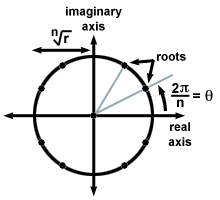Please wait while we process your payment
If you don't see it, please check your spam folder. Sometimes it can end up there.
If you don't see it, please check your spam folder. Sometimes it can end up there.
Please wait while we process your payment

By signing up you agree to our terms and privacy policy.
Don’t have an account? Subscribe now
Create Your Account
Sign up for your FREE 7-day trial
By signing up you agree to our terms and privacy policy.
Already have an account? Log in
Your Email
Choose Your Plan
Individual
Group Discount
Save over 50% with a SparkNotes PLUS Annual Plan!
 payment page
payment page
Purchasing SparkNotes PLUS for a group?
Get Annual Plans at a discount when you buy 2 or more!
Price
$24.99 $18.74 /subscription + tax
Subtotal $37.48 + tax
Save 25% on 2-49 accounts
Save 30% on 50-99 accounts
Want 100 or more? Contact us for a customized plan.
 payment page
payment page
Your Plan
Payment Details
Payment Summary
SparkNotes Plus
You'll be billed after your free trial ends.
7-Day Free Trial
Not Applicable
Renews July 21, 2025 July 14, 2025
Discounts (applied to next billing)
DUE NOW
US $0.00
SNPLUSROCKS20 | 20% Discount
This is not a valid promo code.
Discount Code (one code per order)
SparkNotes PLUS Annual Plan - Group Discount
Qty: 00
SparkNotes Plus subscription is $4.99/month or $24.99/year as selected above. The free trial period is the first 7 days of your subscription. TO CANCEL YOUR SUBSCRIPTION AND AVOID BEING CHARGED, YOU MUST CANCEL BEFORE THE END OF THE FREE TRIAL PERIOD. You may cancel your subscription on your Subscription and Billing page or contact Customer Support at custserv@bn.com. Your subscription will continue automatically once the free trial period is over. Free trial is available to new customers only.
Choose Your Plan
This site is protected by reCAPTCHA and the Google Privacy Policy and Terms of Service apply.
For the next 7 days, you'll have access to awesome PLUS stuff like AP English test prep, No Fear Shakespeare translations and audio, a note-taking tool, personalized dashboard, & much more!
You’ve successfully purchased a group discount. Your group members can use the joining link below to redeem their group membership. You'll also receive an email with the link.
Members will be prompted to log in or create an account to redeem their group membership.
Thanks for creating a SparkNotes account! Continue to start your free trial.
We're sorry, we could not create your account. SparkNotes PLUS is not available in your country. See what countries we’re in.
There was an error creating your account. Please check your payment details and try again.
Please wait while we process your payment

Your PLUS subscription has expired
Please wait while we process your payment
Please wait while we process your payment

Polar Form of Complex Numbers
Let z = a + bı. Consider the complex number z plotted in the
complex plane. The distance between z and the origin is called the
modulus of z (symbolized | z|) and is equal to  . The
angle θ between the positive real axis and the ray containing z
whose endpoint is the origin is called the argument of z, and is equal to
arctan(
. The
angle θ between the positive real axis and the ray containing z
whose endpoint is the origin is called the argument of z, and is equal to
arctan( ). The polar form of a complex number z = a + bı is this: z = r(cos(θ) + ısin(θ)), where r = | z|
and θ is the argument of z. Polar form is sometimes called
trigonometric form as well.
). The polar form of a complex number z = a + bı is this: z = r(cos(θ) + ısin(θ)), where r = | z|
and θ is the argument of z. Polar form is sometimes called
trigonometric form as well.
The polar form of a complex number is especially useful when we're working with powers and roots of a complex number. First, we'll look at the multiplication and division rules for complex numbers in polar form. Let z1 = r1(cos(θ1) + ısin(θ1))andz2 = r2(cos(θ2) + ısin(θ2)) be complex numbers in polar form.
multiplicationanddivision
| z1×z2 = r1r2[cos(θ1 + θ2) + ısin(θ1 + θ2)] |
 = =  [cos(θ1 - θ2) + ısin(θ1 - θ2)] [cos(θ1 - θ2) + ısin(θ1 - θ2)] |
The power of a complex number is given by an equation known as De Moivre's Theorem: Let z = r(cos(θ) + ısin(θ). Then zn = [r(cos(θ) + ısin(θ)]n = rn(cos(nθ) + ısin(nθ), where n is any positive integer.
The roots of a complex number are also given by a formula. A complex number
a + bı is an nth root of a complex number z if z = (a + bı)n,
where n is a positive integer. A complex number z = r(cos(θ) + ısin(θ) has exactly nnth roots given by the equation
 [cos(
[cos( ) + ısin(
) + ısin( )], where n is any positive integer, and k = 0, 1, 2,..., n - 2, n - 1.
)], where n is any positive integer, and k = 0, 1, 2,..., n - 2, n - 1.
When the nth roots of a complex number are graphed in the complex plane, they
all lie on the same circle with radius r 1n. They are also all
evenly spaced around the circle, like spokes on a bike. This is because the
arguments of consecutive roots differ by a measure of
1n. They are also all
evenly spaced around the circle, like spokes on a bike. This is because the
arguments of consecutive roots differ by a measure of  radians.
radians.

Please wait while we process your payment

